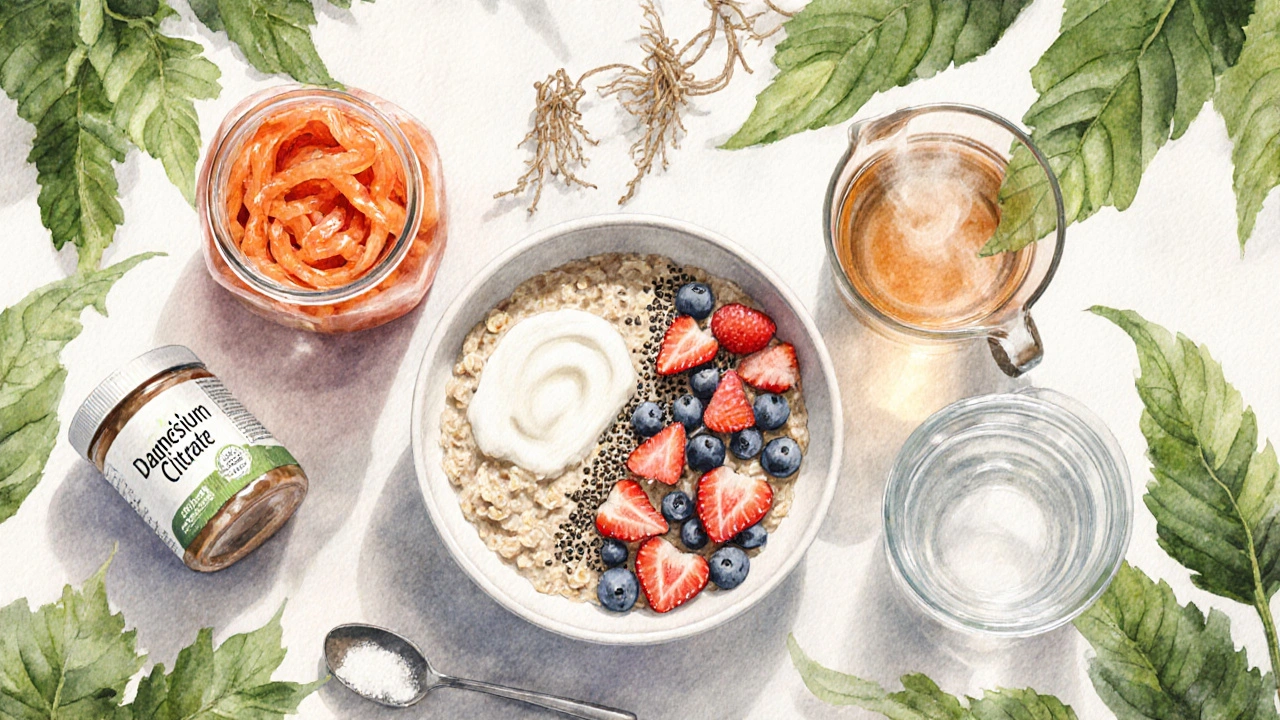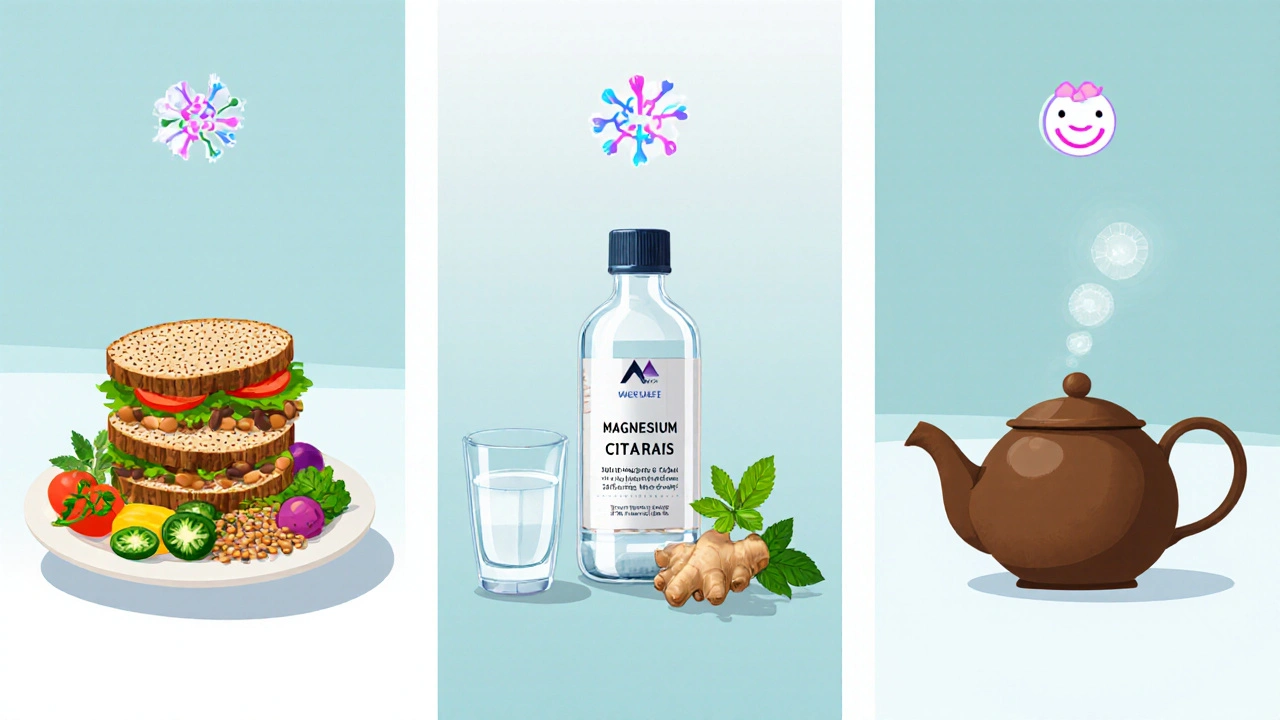
Gut Flush Duration Calculator
Personalized Gut Flush Duration Calculator
Select your symptoms and preferred method to determine the optimal gut flush duration based on your needs.
Recommended Duration
Your gut flush duration will appear here after clicking calculate
Feeling bloated, sluggish, or just plain uncomfortable after a heavy weekend? Your gut might be begging for a reset. A gentle gut flush can clear excess waste, balance microbes, and kick‑start smoother digestion without harsh chemicals or extreme fasting.
Why a Gut Flush Helps
When waste hangs around too long, it can ferment, produce gas, and even irritate the lining of the colon. Over time, that irritation may discourage beneficial bacteria and let bad microbes take over. Resetting the system clears the path for the gut microbiome the community of bacteria, fungi, and viruses living in the digestive tract that influences immunity, mood, and nutrient absorption to re‑establish a healthy balance.
Core Ingredients for a Gentle Cleanse
The most effective gut flush relies on a few everyday items that work together like a well‑orchestrated crew:
- Fiber plant‑based material that adds bulk to stool, draws water into the colon, and feeds good bacteria - aim for 25‑30g per day from fruits, veggies, legumes, and whole grains.
- Probiotic live microorganisms that colonise the gut and out‑compete harmful species - yogurt, kefir, or a quality supplement taken with meals.
- Fermented foods naturally cultured items like kimchi, sauerkraut, and miso that provide both probiotics and prebiotic fibre.
- Magnesium citrate a mineral salt that pulls water into the intestines, encouraging a mild, osmotic stool movement - especially useful if you feel constipated.
- Herbal tea blends such as dandelion‑root, ginger, and peppermint that soothe the gut lining and act as gentle laxatives.
- Water the ultimate carrier that keeps stool soft and helps transport waste out of the colon - at least 2liters daily.
These ingredients are safe for most adults, but if you have a chronic condition, talk to a health professional before starting.

Step‑by‑Step Daily Routine
- Morning hydration: Drink 500ml of room‑temperature water with a squeeze of fresh lemon. The citric acid stimulates bile flow.
- Breakfast boost: Choose a high‑fiber bowl - oatmeal topped with berries, chia seeds, and a dollop of kefir.
- Mid‑morning sip: Brew a cup of dandelion‑root tea a gentle, diuretic herbal infusion that encourages regular bowel movements.
- Lunch load‑up: Fill half your plate with leafy greens, a serving of beans or lentils, and a side of kimchi.
- Afternoon electrolyte: Mix 1tsp of apple cider vinegar, a pinch of sea salt, and 250ml of water.
- Evening wind‑down: Take 200‑300mg of magnesium citrate (follow label instructions) with dinner, then enjoy a short walk to stimulate peristalsis.
- Nightly wind‑down: Finish the day with another cup of herbal tea - peppermint or ginger works well to calm any residual cramping.
Stick to this plan for three to five days. Most people notice lighter stools, less bloating, and clearer energy by the end of the cycle.
Comparing Popular Gut‑Flush Methods
| Method | Key Ingredients | Duration | Typical Result | Best For |
|---|---|---|---|---|
| High‑Fiber Diet | Whole grains, fruits, vegetables, legumes | 5‑7days | Gradual bulk increase, softer stool | Those who prefer food‑based approaches |
| Magnesium Citrate Supplement | Magnesium citrate powder or tablets | 1‑2days | Rapid, mild cramping, clearer bowel movement | People needing quick relief from constipation |
| Herbal‑Tea Blend | Dandelion, ginger, peppermint, fennel | 3‑5days | Gentle, soothing effect, reduced bloating | Sensitive stomachs or those avoiding minerals |
Pick the method that matches your timeline and tolerance. You can also combine elements - for example, a high‑fiber diet paired with a low‑dose magnesium citrate for an extra push.

Potential Pitfalls & How to Avoid Them
Even a natural gut flush can backfire if you push too hard:
- Over‑loading on fiber too quickly may cause gas and cramps. Increase intake by 5‑10g per day rather than jumping from 10g to 30g overnight.
- Excess magnesium can lead to diarrhea and electrolyte imbalance. Stick to the recommended dose and stay well‑hydrated.
- Skipping water defeats the purpose. Aim for a minimum of eight 250‑ml glasses, more if you’re active or live in a hot climate like Brisbane.
- Relying solely on supplements without solid food can starve your microbiome. Always pair with fiber‑rich meals.
Listen to your body. If you experience persistent pain, blood in stool, or dizziness, stop the cleanse and consult a professional.
Quick Checklist Before You Start
- Confirm no contraindications (e.g., kidney disease, recent abdominal surgery).
- Shop for fresh produce, kefir, and a reputable magnesium citrate product.
- Plan a three‑day window free from major travel or stressful events.
- Set a reminder to drink water every hour.
- Track daily stool consistency using the Bristol Stool Chart (aim for type3‑4).
Frequently Asked Questions
How often can I do a gut flush?
Most experts recommend no more than once a month for gentle cleanses. If you use a stronger method like magnesium citrate, limit it to every six weeks to avoid dependence.
Will a gut flush help with weight loss?
A gut flush can reduce temporary water weight and bloating, making you feel lighter. Sustainable weight loss still depends on overall diet, activity, and calorie balance.
Can I combine a gut flush with intermittent fasting?
Yes, but keep the fasting window moderate (e.g., 12‑14hours) while you’re increasing fiber and fluids. Extreme fasting may aggravate constipation when you’re already loading the colon.
Is colon hydrotherapy safer than a natural gut flush?
Medical colon hydrotherapy is performed by trained professionals and can be safe for short‑term use, but it carries risks of perforation and electrolyte loss. A natural gut flush avoids those risks and supports microbiome health.
What if I feel cramping during the cleanse?
Mild cramping is normal as the colon moves waste. If it becomes sharp or lasts more than an hour, reduce fiber dose, increase water, and consider pausing magnesium citrate.

